How to Care for Aloe Plant in Winter
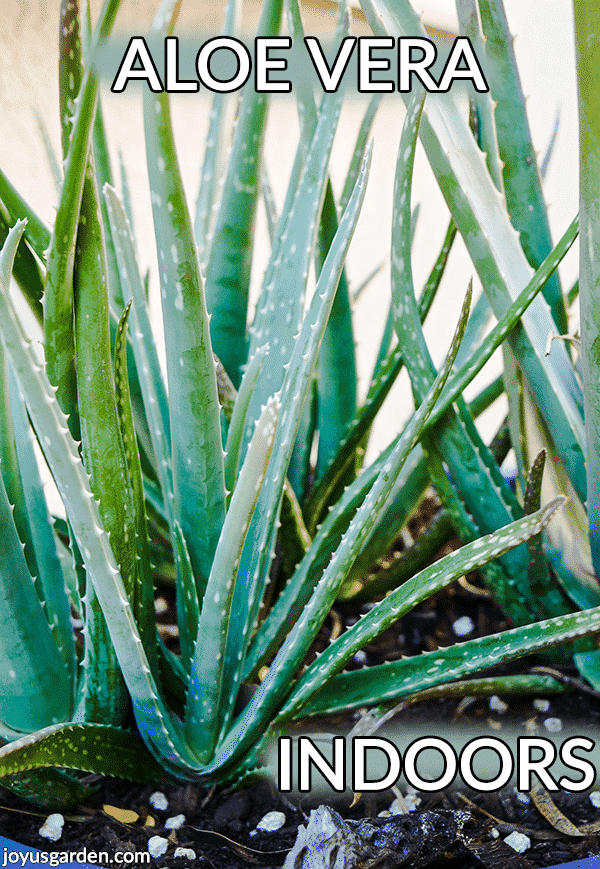
Aloe vera is an attractive & beneficial succulent plant to grow in your home. Here are 5 reasons why you may be having problems growing Aloe vera indoors.
Aloe vera not only looks good, but it's a succulent plant with many beneficial properties. Why wouldn't you want one in your home? Some people have a problem growing aloe vera indoors. I'm sharing 5 reasons you may be struggling with this plus what to do about it.
I could come up with 15 or 20 reasons but that might just confuse you. These 5 reasons, in my humble horticultural opinion, are the most common. Many times less is more, especially if you're a beginning houseplant and/or succulent gardener.
Some Of Our General Houseplant Guides You'll Find Helpful:
- Guide To Watering Indoor Plants
- Beginner's Guide To Repotting Plants
- 3 Ways To Successfully Fertilize Indoor Plants
- How to Clean Houseplants
- Winter Houseplant Care Guide
- Plant Humidity: How I Increase Humidity For Houseplants
5 Reasons You May be Having Problems Growing Aloe Vera Indoors
Before I continue on, here's an Aloe Vera 101 Guide for your reference. In it you'll find info on: growing aloe vera indoors, outdoors, removing the pups (babies which grow at the base), planting and caring for the pups, planting aloe in containers plus the mix to use, and how I use and store aloe vera leaves.
1. Your Aloe Vera isn't getting enough light.
Aloe vera needs bright, natural light to grow and thrive. It isn't a low light houseplant.
Lack of light causes the plant to weaken and the leaves may crease or bend at the base or in the middle. A leggy growth habit and/or pale leaves are other indications of insufficient light.
This post on How Much Sun Succulents Need will also help you out.
Solution
Put your Aloe vera near a sunny window. You can put it in the window if it's not a sunny, hot exposure like a south or west window.
In the cooler, darker winter months you may have to move your aloe to a brighter spot so it gets the light it needs.
Rotating your plant every 2-3 months will make sure it's receiving light evenly on all sides and not permanently leaning towards the light source.
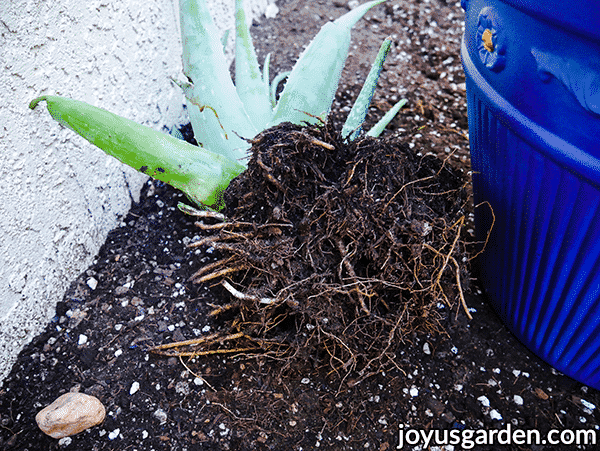
One of my Aloe vera pup clusters waiting to be planted. You can see how thick & extensive the root system is.
2. Your Aloe Vera is getting too much water.
Aloe vera has fat, plump leaves that are full of gel. They store water as well as do the thick roots. These plants are subject to root rot, especially when growing indoors.
The leaves will turn brown and soft when watered too much. Put plainly, they mush out.
Solution
Water your Aloe vera when it's about 3/4 of the way dry. That could be every 2 to 4 weeks in the summer, depending on the conditions it's growing in along with pot size and what the soil mixture is.
These guides to Watering Indoor Plants and Watering Succulents will help you out.
Just know that in the winter months you'll want to back off on the watering frequency because it's the time for houseplants to rest.
Make sure the pot your Aloe vera is growing in has drain holes so the water can flow out. Another thing to be mindful of is that it doesn't sit in a saucer full of water.
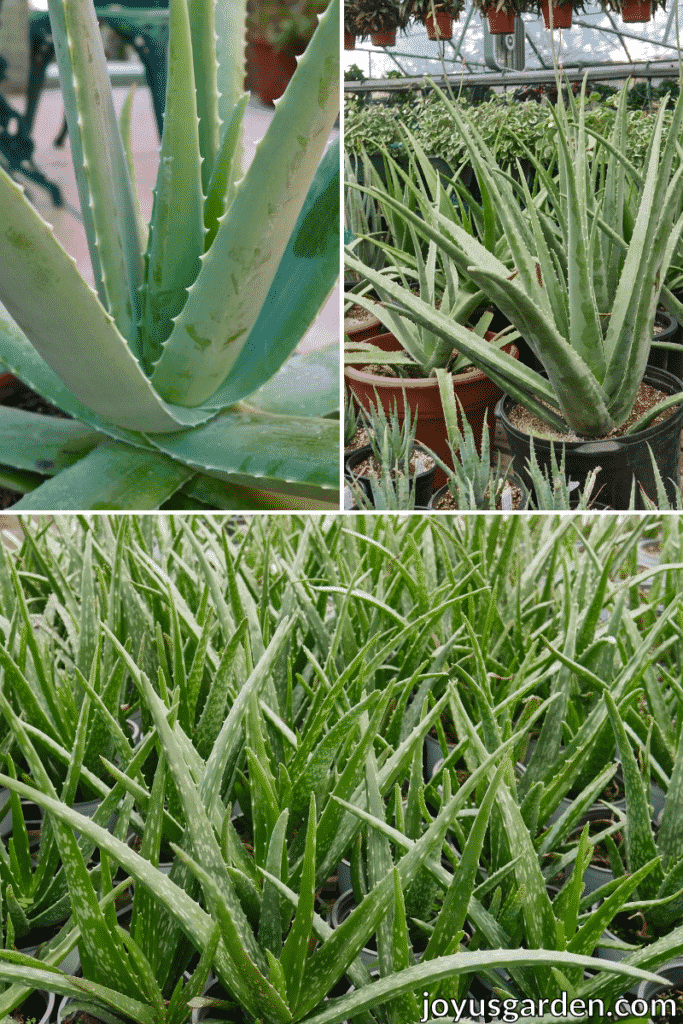
3. Your Aloe Vera is planted in the wrong soil mix.
This goes hand in hand with the above point. An Aloe vera plant prefers a mix that's light, well aerated and drains well. If it's planted in a mix that is too heavy, it'll be much more subject to overwatering and ultimately rot.
Here's a post on Planting Aloe Vera in Containers plus the mix to use.
Solution
To replant your Aloe vera. It does best in succulent and cactus mix so the water flows through and the roots are well aerated.
Here's a recipe for DIY Succulent & Cactus Soil which I use for all my succulent planting. You'll find online options in my amazon succulent shop if you don't want to make your own.
Check out this Repotting Guide that you'll find helpful, especially if you're a beginning gardener.
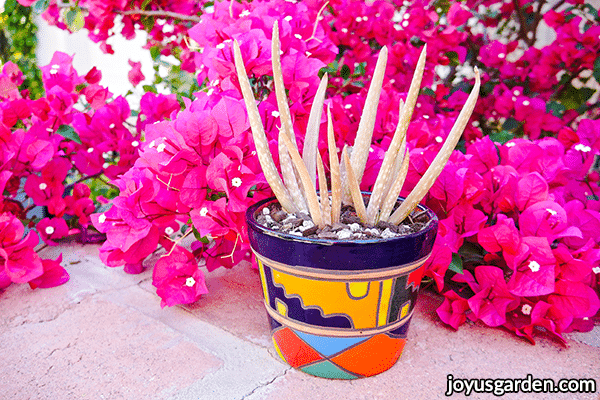
A few Aloe pups (babies) I planted in a cute little Talavera pot to give to a friend. They're tinged with orange/brown because this pic was taken in early March after a winter with a few nights in the high 20's. Plants change color in response to environmental stress. They greened right back up once the evening temps warmed.
4. Your Aloe Vera is located in a hot window.
Even though most succulents like medium to high light when growing indoors, being up against hot glass will burn the leaves. Because of all the liquid in the leaves, they're prone to sunburn.
If large brown patches are appearing on the leaves, or they're turning orange/brown, it's your Aloe vera getting too much sun.
Solution
Move your plant out of or away from the hot, sunny window. In a south or west exposure is fine, just not in the window.
5. The Aloe Vera plant was stressed when you bought it.
I've seen Aloe vera at both Lowe's and Home Depot for sale indoors in low light. There's a good chance they've been over-watered or under-watered depending on how long they've been sitting on the shelves.
I know many of you shop at Trader Joe's. Same thing applies here – the Aloe veras sit crammed on shelves with other succulents in pots which may or may not have drainage.
Being kept too dry, too wet, or not getting enough light weakens a plant over time. If it's been stressed for too long (which can happen sooner than you'd think), it may not recover.
Solution
Choose a healthy plant. If the leaves are yellow, have brown spots and/or are bending, pass it by.
How Does Aloe Vera Grow Outdoors As Well As Indoors?
Yes, depending on the climate zone. I live in Tucson and grow Aloe Vera Outdoors year-round in a large pot. Previously I lived in Santa Barbara where I grew it in pots outside too. I've grown it as a houseplant both in New York City and San Francisco.
As you would suspect, it grows much faster for me outdoors especially here in Tucson (where it grows in a bright shade). It's now early fall and my plants grew like crazy and produced quite a few pups this past spring and summer.
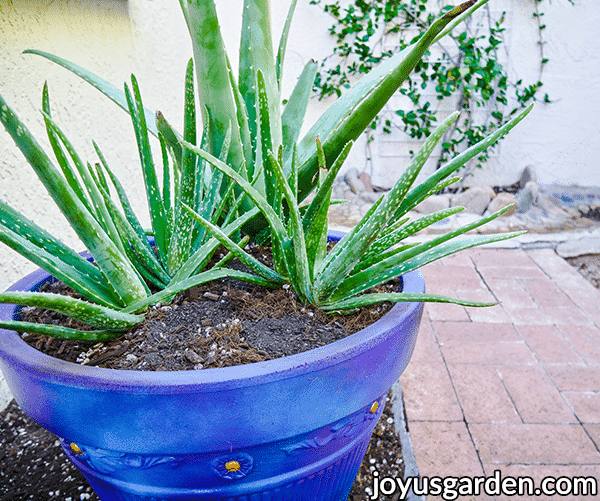
Even if you live in a climate with cold winters, your Aloe vera will enjoy spending the summer outdoors. Just make sure it's protected from strong sun or too much rain. And, bring it indoors before the temperatures dip too low (under 40F).
In a nutshell: Don't baby your Aloe vera plant. The two main reasons an Aloe vera plant growing indoors dies is due to lack of light and too much water.
Give an Aloe vera a try—it looks great, is easy to maintain and useful to have around. A plant with a purpose!
Happy gardening,

P.S. Be sure to check the round-up of my Aloe Vera Care Guides!
Looking for more easy-care houseplants? Check out these indoor plants!
- Easy Care Office Plants For Your Desk
- 10 Easy Care Houseplants For Low Light
- 7 Hanging Succulents to Love
- Pothos Care: The Easiest Trailing Houseplant
- ZZ Plant Care Tips: A Tough As Nails, Glossy Houseplant
- Rubber Plant: Growing Tips for this Easy Care Indoor Tree
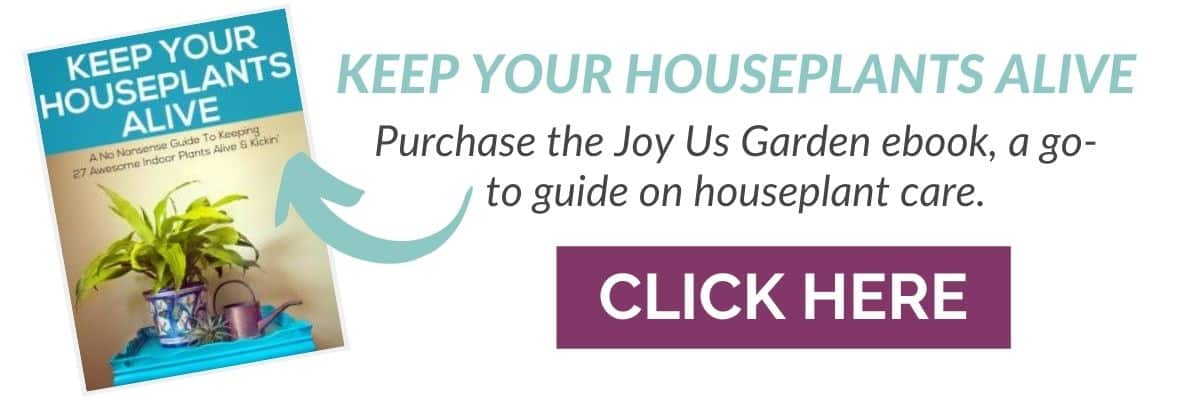
This post may contain affiliate links. You can read our policies here. Your cost for the products will be no higher but Joy Us garden receives a small commission. Thank you for helping us spread the word & make the world a more beautiful place!
Note: This post was originally published on 10/24/2019 & was updated on 8/19/2020.
How to Care for Aloe Plant in Winter
Source: https://www.joyusgarden.com/problems-growing-aloe-vera-indoors/